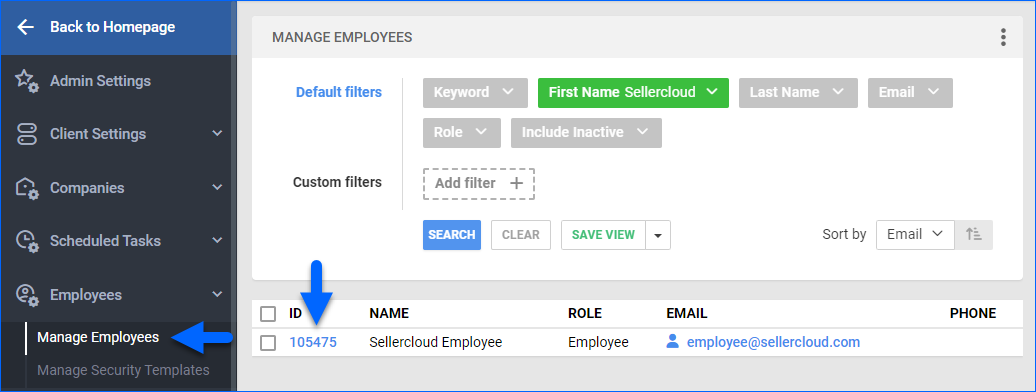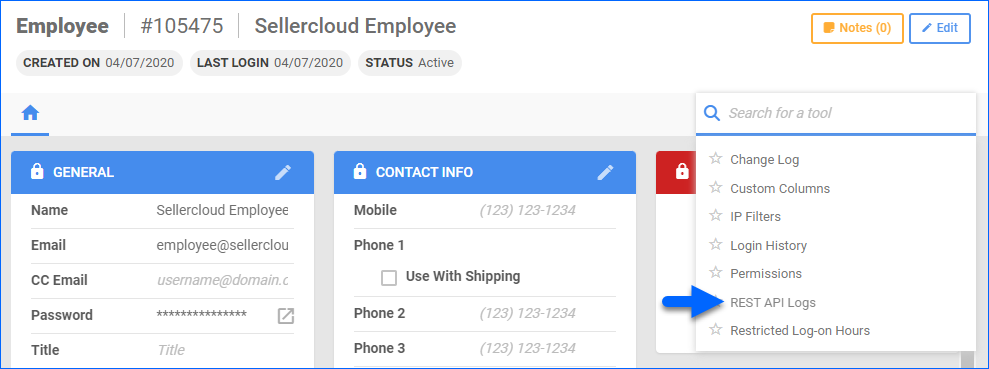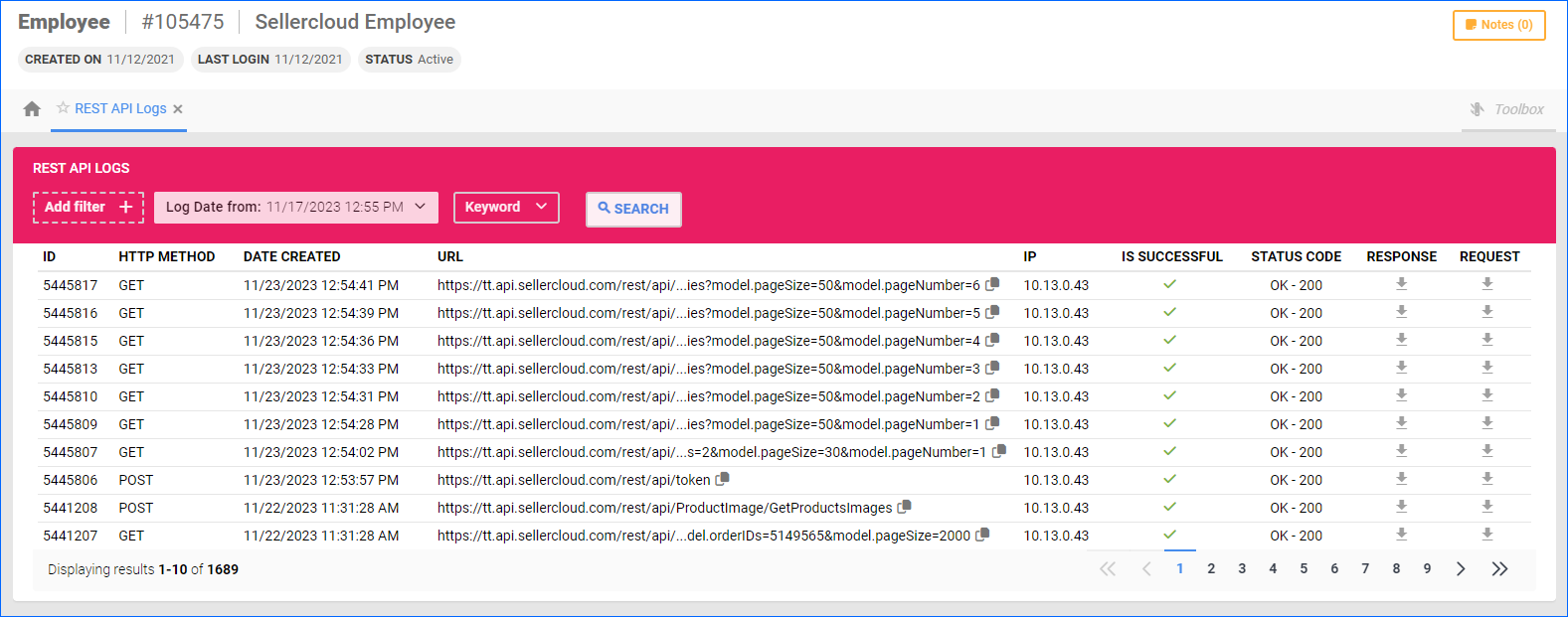Overview
The REST API Logs provide a granular view of user interactions with Sellercloud’s REST API, capturing the essential details of every single API call. This feature records a comprehensive data set, including HTTP methods, timestamps, URLs, IP addresses, success indicators, status codes, and the specifics of each request and response. Developers and administrators can use this information to troubleshoot issues, analyze performance, and fine-tune API usage.
User-Specific Rest API Logs
To access an employee’s REST API logs:
- Go to Settings.
- Select Employees > Manage Employees.
- Click Search to see all employees or add filters for a precise search.
- Click the employee’s ID to open the Employee Details page.

- Click the Toolbox and select REST API Logs.

- You can use filters to show only specific API calls. Clicking Add filter allows you to add two extra filters: Is Successful and Status Code.
- Click Search after updating filters.

- See the next sections for details about the filters and data columns in the log.
Filters
Refer to the table below for details about the available filters.
| Filter | Description |
| Log Date from | Show only API calls made within a specific time period. |
| Keyword | Show only specific API calls by searching their URL. |
| Is Successful | Show only successful or unsuccessful API calls. |
| Status Code | Show only API calls with a specific status code. |
Log Data
Refer to the table below for details about the data columns in the log.
| Filter | Description |
| ID | The unique identifier assigned to each log entry, facilitating tracking and reference. |
| HTTP Method | The type of HTTP request method used in the API call (e.g., GET, POST, PUT). |
| Date Created | The timestamp indicating when the API call log entry was generated. |
| URL | The URL specifying the endpoint of the API. |
| IP | The IP address from which the API call originated, identifying the source location. |
| Is Successful | An indicator showing whether the API call was successful. |
| Status Code | The HTTP status code returned by the API, providing information about the success or failure of the request. |
| Response | The data or information received from Sellercloud’s REST API as a result of the request. To view it, you must click the Download button to export it to a .txt file. |
| Request | The request body of the API call. To view it, you must click the Download button to export it to a .txt file. When an API request contains all the necessary parameters within the URL itself, there won’t be any additional information sent in the request body. In such cases, if you download the request document, it might appear blank because there’s no content or data beyond the URL parameters to display. |
Account-wide Rest API Call Logs
Users with the Client Admin role can access all Rest API logs:
- Go to Settings > Client Settings > Rest API Call Logs.
- The grid will load automatically, with a Log Date From date. You can then use the filters to narrow down the information.
- User – select a username from the dropdown to see calls related to that email. This is also a grid column.
- Keyword – type in a keyword. this filter looks are the URL grid column. An example keyword is ScheduledTask/Details.
- Status Code – Select a status code from the dropdown. You will see the status name and numerical value. This is also a grid column.
- Log Date From/To – select a date range. The grid will display calls initiated within that range.
- Is Successful – Yes or No, to filter API calls based on whether they went through successfully. This is also a grid column.
- Log ID – only accepts one value. The log ID is a unique numerical value automatically assigned to each API call. This is also a grid column.
- HTTP Method – Select from GET, POST, PUT, or DELETE. This is also a grid column.
- Available Endpoints – select from the dropdown. The options in this filter are based on what endpoints are available to search for based on whether they exist in your account.
- In addition to the grid columns mentioned above, you will also be able to see the full URL and IP Address, and you will have the option to download the Request and Response Documents.
- Optionally, after applying filters, you can Export the loaded data to an Excel sheet from the Action Menu icon in the top right corner.
